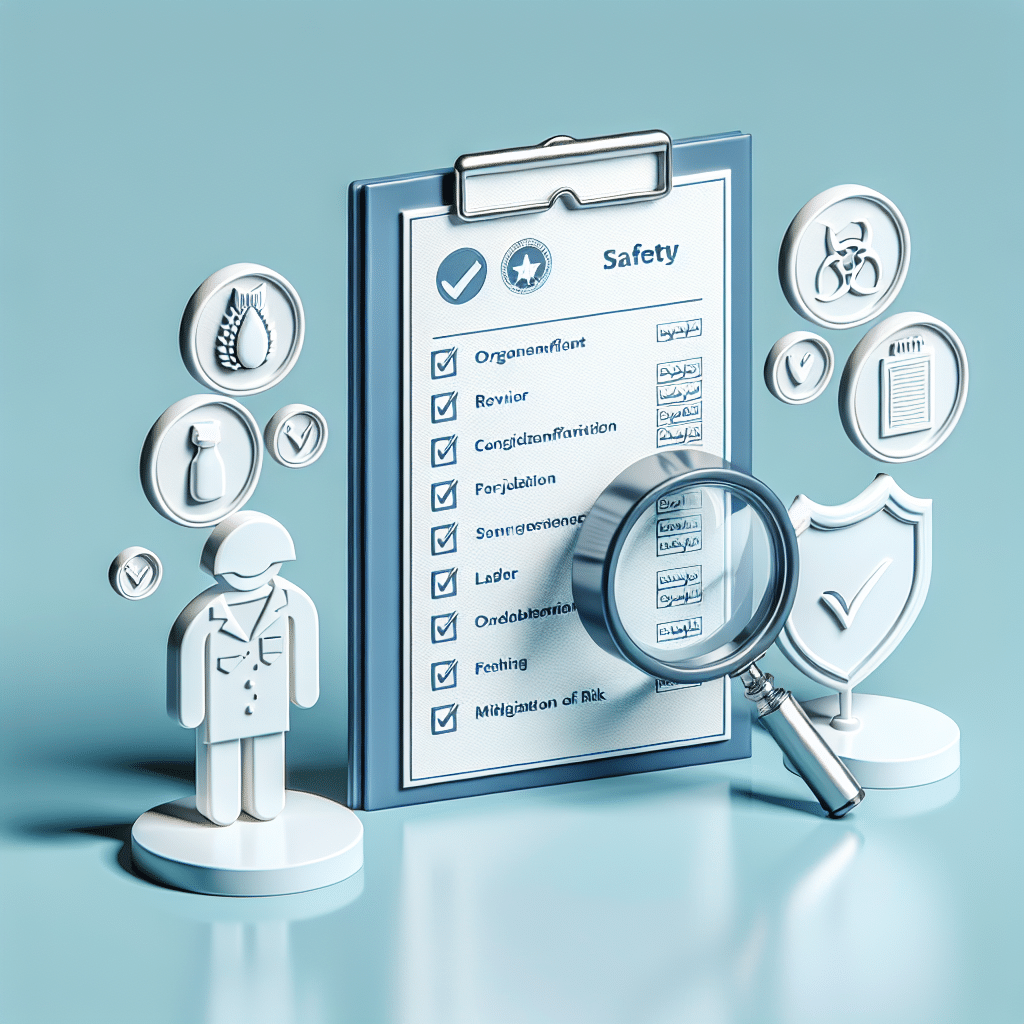Mitigating Risk by Simplifying Food Safety Reports
-
Table of Contents
- Enhancing Food Safety: Streamlining Reports to Mitigate Risks
- The Importance of Food Safety Reporting
- Challenges in Current Food Safety Reporting Practices
- Strategies for Simplifying Food Safety Reports
- Implementing User-Friendly Reporting Systems
- Standardizing Reporting Formats
- Utilizing Visual Data Representations
- Training and Education
- Benefits of Simplified Food Safety Reports
- Case Studies and Statistics
- Conclusion: Key Takeaways for Enhanced Food Safety
- ETprotein: Your Partner for High-Quality Protein Products
Enhancing Food Safety: Streamlining Reports to Mitigate Risks

Food safety is a critical concern for consumers, businesses, and regulatory agencies worldwide. Ensuring the safety of food products not only protects public health but also maintains consumer confidence and the integrity of food brands. One of the key challenges in food safety management is the complexity of food safety reports, which can be difficult to produce, interpret, and act upon. Simplifying these reports is essential for effective risk mitigation and can lead to significant improvements in food safety outcomes.
The Importance of Food Safety Reporting
Food safety reports are vital tools for tracking the presence of pathogens, contaminants, and other hazards in the food supply chain. They provide valuable data that can help identify trends, pinpoint sources of contamination, and prevent foodborne illnesses. However, the effectiveness of these reports is often hindered by their complexity, which can lead to misinterpretation, delayed responses, and increased risk of outbreaks.
Challenges in Current Food Safety Reporting Practices
Current food safety reporting practices often involve extensive paperwork, technical jargon, and data that can be overwhelming for food safety managers and other stakeholders. The complexity of these reports can lead to several issues:
- Time-consuming report generation and analysis
- Difficulty in identifying critical data points
- Increased likelihood of human error
- Delays in decision-making and response times
Strategies for Simplifying Food Safety Reports
To mitigate risks effectively, it is crucial to streamline food safety reports. Here are some strategies that can be employed:
Implementing User-Friendly Reporting Systems
Adopting reporting systems with intuitive interfaces and clear instructions can significantly reduce the complexity of generating and interpreting food safety reports. These systems should allow for easy data entry, automated analysis, and straightforward reporting formats.
Standardizing Reporting Formats
Creating standardized reporting formats can help ensure consistency and clarity across different reports and organizations. This standardization can facilitate quicker identification of issues and more efficient communication among stakeholders.
Utilizing Visual Data Representations
Incorporating charts, graphs, and other visual aids can make complex data more accessible and easier to understand at a glance. Visual representations can highlight key trends and anomalies that might require immediate attention.
Training and Education
Providing comprehensive training for staff on how to use reporting systems and interpret reports can improve the accuracy and efficiency of food safety management. Ongoing education can also help keep all parties up-to-date with best practices and regulatory requirements.
Benefits of Simplified Food Safety Reports
Simplifying food safety reports offers numerous benefits:
- Enhanced clarity and understanding of food safety data
- Quicker identification and response to potential hazards
- Improved compliance with food safety regulations
- Reduced administrative burden on food safety personnel
- Better resource allocation and risk management
Case Studies and Statistics
Several case studies have demonstrated the positive impact of simplified reporting on food safety. For instance, a study by the Food and Drug Administration (FDA) found that the implementation of electronic reporting systems reduced the average response time to food safety incidents by 50%. Additionally, research indicates that simplified reporting can lead to a 30% reduction in the incidence of foodborne illnesses.
Conclusion: Key Takeaways for Enhanced Food Safety
In conclusion, simplifying food safety reports is a critical step towards mitigating risks in the food supply chain. By implementing user-friendly systems, standardizing formats, utilizing visual data representations, and investing in training and education, organizations can enhance their food safety practices. The benefits of simplified reporting are clear: improved clarity, faster response times, better compliance, and ultimately, a safer food supply for all.
ETprotein: Your Partner for High-Quality Protein Products
In the context of food safety and quality, ETprotein stands out as a provider of premium protein products that meet the highest standards. Their range of organic bulk vegan proteins and L-(+)-Ergothioneine (EGT) products are non-GMO, allergen-free, and characterized by a neutral taste, making them ideal for various industries, including nutraceuticals, pharmaceuticals, and food and beverage.
ETprotein’s commitment to quality and safety is evident in their meticulous production processes and the purity of their products, with L-(+)-Ergothioneine purity over 98% and 99%. By choosing ETprotein, businesses can ensure that they are incorporating safe, high-quality protein ingredients into their products, contributing to the overall safety and satisfaction of their consumers.
About ETprotein:
ETprotein, a reputable protein and L-(+)-Ergothioneine (EGT) Chinese factory manufacturer and supplier, is renowned for producing, stocking, exporting, and delivering the highest quality organic bulk vegan proteins and L-(+)-Ergothioneine. They include Organic rice protein, clear rice protein, pea protein, clear pea protein, watermelon seed protein, pumpkin seed protein, sunflower seed protein, mung bean protein, peanut protein, and L-(+)-Ergothioneine EGT Pharmaceutical grade, L-(+)-Ergothioneine EGT food grade, L-(+)-Ergothioneine EGT cosmetic grade, L-(+)-Ergothioneine EGT reference grade and L-(+)-Ergothioneine EGT standard. Their offerings, characterized by a neutral taste, non-GMO, allergen-free attributes, with L-(+)-Ergothioneine purity over 98%, 99%, cater to a diverse range of industries. They serve nutraceutical, pharmaceutical, cosmeceutical, veterinary, as well as food and beverage finished product distributors, traders, and manufacturers across Europe, USA, Canada, Australia, Thailand, Japan, Korea, Brazil, and Chile, among others.
ETprotein specialization includes exporting and delivering tailor-made protein powder and finished nutritional supplements. Their extensive product range covers sectors like Food and Beverage, Sports Nutrition, Weight Management, Dietary Supplements, Health and Wellness Products, and Infant Formula, ensuring comprehensive solutions to meet all your protein needs.
As a trusted company by leading global food and beverage brands and Fortune 500 companies, ETprotein reinforces China’s reputation in the global arena. For more information or to sample their products, please contact them and email sales(at)ETprotein.com today.












